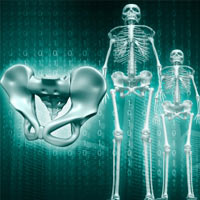Beyond the Pill: Physicians’ Trend for 2013
(Scroll towards the bottom to read Dr. Fishman’s words about the Alexander Technique)
One of the big health trends for 2013 is drug companies and insurance giants looking beyond drugs patients take to behavioral, “outcome-based” approaches — like United Health Group’s partnership with YMCAs and Walgreens for a program to help prevent and control diabetes. Money-saving ideas may also be health-creating ideas. And patients are ahead.
More than 70 percent of older adults use some form of alternative medicine already. As long ago as 2008, 3 out of 4 health-care workers in the U.S. were using some form of alternative medicine themselves. As I said, money has a lot to do with these developments. The use of alternative therapies increased, especially in Caucasians (18 percent!) and significantly among other groups as well between 2002 and 2007, a development that has been tied to the lower costs of these remedies.
Doctors Embracing Lower-Cost Medical Solutions
Without oversimplifying or delving too deeply into the profit motives of huge corporations, many of us “pill pushers” are in favor of a more nuanced approach to medical problems. While I am glad I went to medical school and learned when to prescribe an MRI, when to do an EMG to test nerve conduction, when to advise patients to take strong painkillers, to have trigger-point injections or an epidural that can erase intense back pain administered by a colleague I work with, I’m grateful I have other techniques to oppose pain and disability.
I didn’t know it then, but I might have been in the forefront of what today is called integrative medicine when, decades ago, I instinctively began to incorporate yoga into my medical practice. Those were the days when there were few, if any, respected clinical trials showing that yoga can help relieve low back pain, can have an effect on knee osteoarthritis, can go a long way toward dissipating stress. Now there are a large number of acceptable medical journal articles proving yoga’s benefits, and 20 million Americans regularly practice it, at least in part because they are aware of its health benefits.
But yoga isn’t the only “alternative therapy” that helps patients achieve better outcomes than pills and medical procedures alone. My prediction is that 2013 will see more and more physicians like myself who have added more than conventional Western medicines to their treatments. In my office I offer still-obscure ways of healing such as Alexander technique and Feldenkrais that grateful patients gush about when thanking me, their aches and pains having dissipated, sometimes after years of disability and low life quality. I think these people, who come to me because they are in pain and need help, should also have access to physical therapy, chiropractic, massage, the cold laser, accupuncture and other “beyond the pill” curatives.
Therapies Work Together
The marvelous thing about these methods is that they are synergistic. A person who has low back pain can benefit from nonsteroidal anti-inflammatories and trigger-point injections I supply; at the very same time, he or she can combine chiropractic, physical therapy, yoga and other techniques to speed recovery. Many of these methods are low-cost, or after some short period of training can be done at home for free.
Last month, a hunched-over patient came to me complaining of such severe pain that she could not bear physical therapy. All she wanted was an opium-based medication. She’d been in this situation for about four years, and said she knew what would help: either this drug or that drug, but not some other ones. I asked her about her history. When did her pain begin? Did she have any clue about the reason for it? What were her activities? While we were having this rather long conversation, I began to suspect that I knew the reason for this woman’s problem. She sat at a computer all day. Her posture was poor. She was hunched over!
It wasn’t that her posture was a result of her pain, it was that her pain was a result of her posture. I checked her physically, and sure enough, the muscles in her back were in impressive spasm. I gave her several injections that gave her quite a bit of immediate relief. Then I sent her for a massage, wrote out a plan for physical therapy and made what was perhaps the most important recommendation for the future. I referred her to a teacher of Alexander technique who could help her get to the root of her problem and correct it. So much of Alexander technique is about posture. It took nearly a month, because changing old habits can be difficult. But then this woman cancelled her scheduled follow-up appointment with me because, as she said, “I don’t need it.”
Mark Josefsberg-Alexander Technique NYC
(917) 709-4648











Leave A Comment